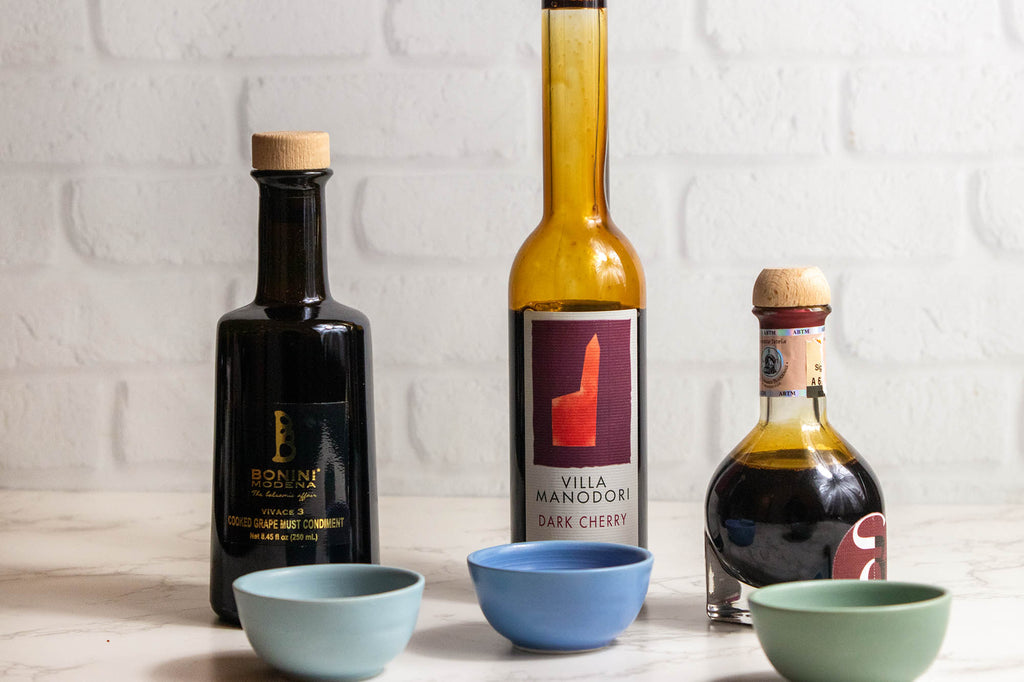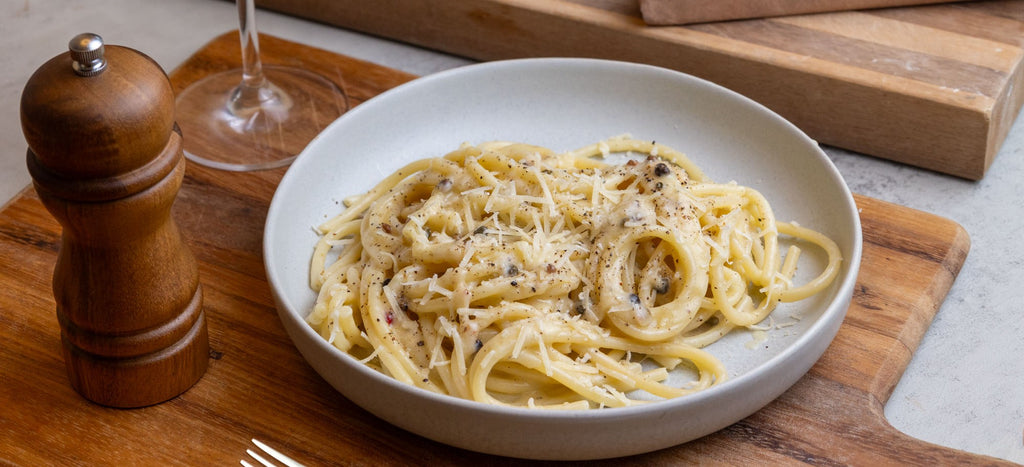The Smart Shopper’s Guide to Buying Balsamic Vinegar
If you’re like most Italian food lovers, you know there’s a difference between “real” balsamic and the scores of cheap imitations out there…but just what makes balsamic “real” might be a little hazy. You’re not alone! The world of quality balsamic is complex, and with prices that can reach into the hundreds of dollars, it’s easy to feel intimidated out of learning more.
Why Bother?
It really is worthwhile to taste genuine, traditionally made balsamic—and once you do, you’ll never want to settle for the grocery-store version again. Dense, luscious, and stunningly complex, it’s not just another ingredient in your pantry, it’s an addictingly flavorful leading lady you’ll want to showcase everywhere. There’s a reason that a favorite snack in Modena, where balsamico is made, is nothing more than chunks of aged parmigiano reggiano drizzled with balsamico! These two simple foods made to the highest standards come together in a dazzling way, showing off the true genius of their traditional makers.

DOP Balsamic Vinegar
How to Spot Real Balsamic
When you’re shopping for Italian balsamic, there are two certifications to look for. These are managed by the local governing body that maintains balsamic’s traditional standards. The strictest of these is DOP (protected designation of origin), while a slightly more relaxed version is known as IGP (protected geographic indication).
To earn DOP certification, every step of the balsamic’s production must follow a strict set of rules. Makers start with must (the industry term for pressed grapes and their juice, which goes on to become wine or vinegar) from native grapes such as lambrusco, ancellotta, trebbiano, occhio di gatta, berzemino, and sgabvetta grown only in the province of Modena. The musts are cooked gently in an open vat for at least 30 minutes, then placed into wood barrels to age and ferment naturally for at least 12 years.
The DOP’s rules are so strict, they even control the type of bottle in which the vinegar is sold! This is the easiest way to spot a DOP balsamico. If you’re looking at the real thing, it will be:
- In a clear glass bottle with a tall neck, round belly, and narrow rectangular base
- In either 3.4oz., 6.8oz., or 13.5oz sizes
- Labeled as “Aceto Balsamico Tradizionale di Modena”
- Sealed with a numbered paper label that bears the round red-and-yellow DOP emblem
It’s against the rules to indicate how long a true balsamic has been aged on the label. If it’s more than 25 years old, you’ll see the words “extra old”/“extravecchio”—but that’s it. Neighboring Reggio Emilia follows very similar rules for their DOP balsamic, but their bottle is shaped like an upside-down wine glass.
IGP balsamic relaxes the rules a bit. While the vinegar must start with the same grape juice, it may come from Modena or Reggio Emilia, and it can be tweaked with the addition of a small amount of wine vinegar. Some artisan balsamic producers prefer to follow this path, because the vinegar adds a pleasing pucker to the finished product. IGP balsamic must age in wood barrels for a minimum of 60 days; if it’s aged for 3 years or more, you’ll see “aged”/“invecchiato” on the label. The vinegar can be sold in glass, ceramic, or even wooden containers, but it will always be labeled as “Aceto Balsamico di Modena” and stamped with the round blue-and-yellow IGP emblem.

Avoiding Imitators
If you don’t see either the DOP or IGP emblem, you might still have a delicious, high-quality vinegar on your hands, but you’ll have to look a little closer. Play detective and look for language clues like “reduction,” “cream,” or “glaze”—these products mimic the sweetness and texture of good balsamico using additives like artificial colors (caramel coloring is a common lurker), sugars, thickeners, and preservatives.
The order of the ingredients is important, too. If “wine vinegar” or “white wine vinegar” are listed before “cooked grape must,” it's not really balsamic at all!
Even if you do have an IGP bottle on your hands, you still need to do some digging. Because there’s more flexibility in the IGP process, some larger industrial producers are able to make a thin, acidic, not-very-flavorful vinegar that still qualifies for the IGP seal. It’s always a good idea to do a little research into the brand to make sure they’re a smaller artisan, or look for that “aged” label to be sure it’s got a good depth of flavor.



















0 comments